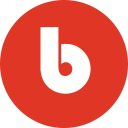Starting A Bed Sheet Business Making $600K In First 8 Months
Hello! Who are you and what business did you start?
I’m Colin McIntosh, Founder & CEO of Sheets & Giggles, a pun-based, eco-friendly bedding brand that launched in May 2018 on Indiegogo with our first product: lyocell bed sheets made from eucalyptus trees.
Our bedding is softer than cotton, more breathable, and more moisture-wicking, and it also uses up to 95% less water than cotton sheets to make. (Major trade-off: it’s generally more expensive than cotton, and you have to take better care of it [no bleach, cold wash, low heat, etc.].)
In our first 6 months in business, we received over 6,000 orders and nearly half a million dollars in revenue, and in September we won first place at Denver Startup Week 2018. In October, we began shipping preorders and got about 4,500 out the door, and we’re still catching up with demand! Nearly ⅘ of our customers are women, and more than half are in their 20s and 30s.

Download the report and join our email newsletter packed with business ideas and money-making opportunities, backed by real-life case studies.

Download the report and join our email newsletter packed with business ideas and money-making opportunities, backed by real-life case studies.

Download the report and join our email newsletter packed with business ideas and money-making opportunities, backed by real-life case studies.

Download the report and join our email newsletter packed with business ideas and money-making opportunities, backed by real-life case studies.

Download the report and join our email newsletter packed with business ideas and money-making opportunities, backed by real-life case studies.

Download the report and join our email newsletter packed with business ideas and money-making opportunities, backed by real-life case studies.

Download the report and join our email newsletter packed with business ideas and money-making opportunities, backed by real-life case studies.

Download the report and join our email newsletter packed with business ideas and money-making opportunities, backed by real-life case studies.




















